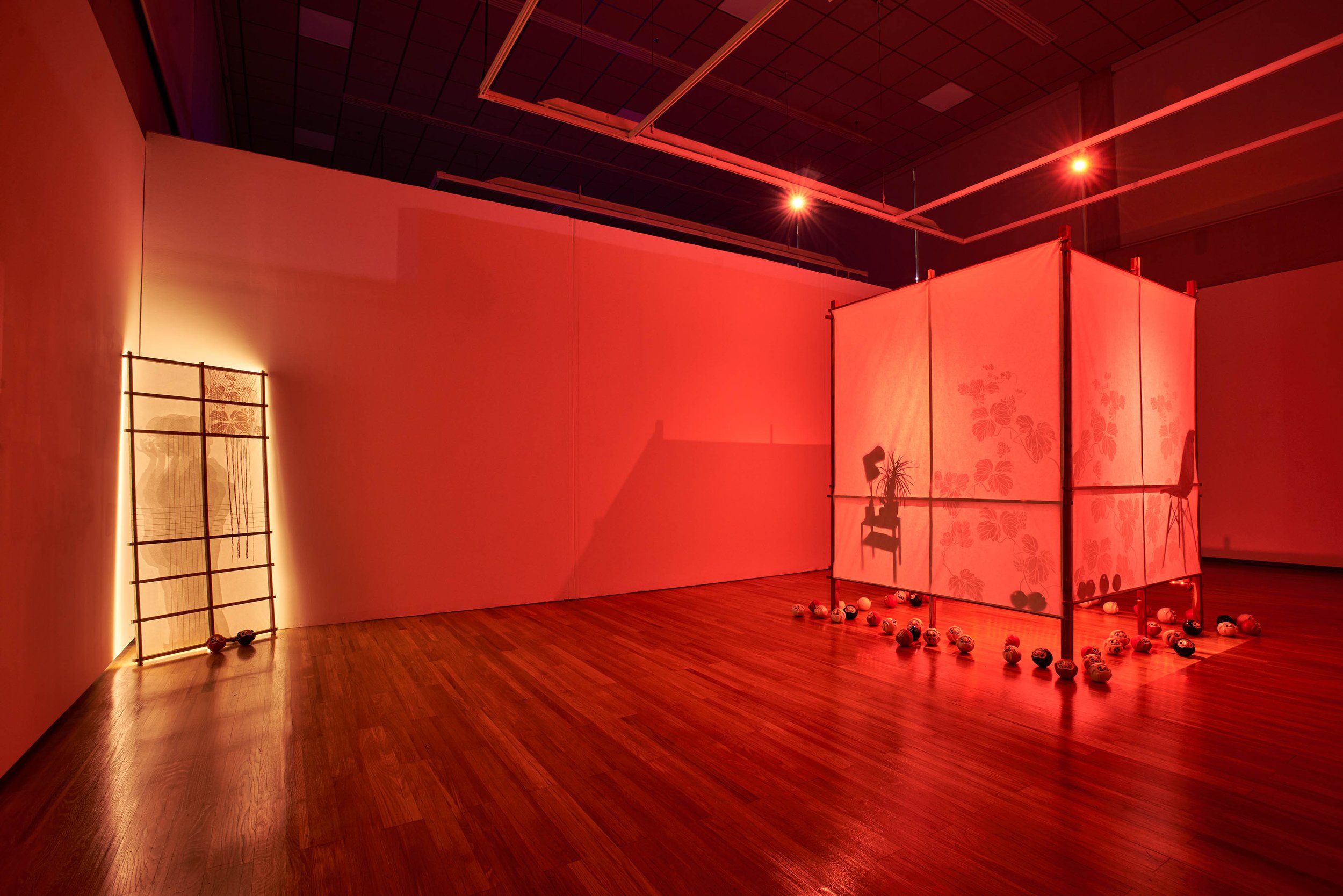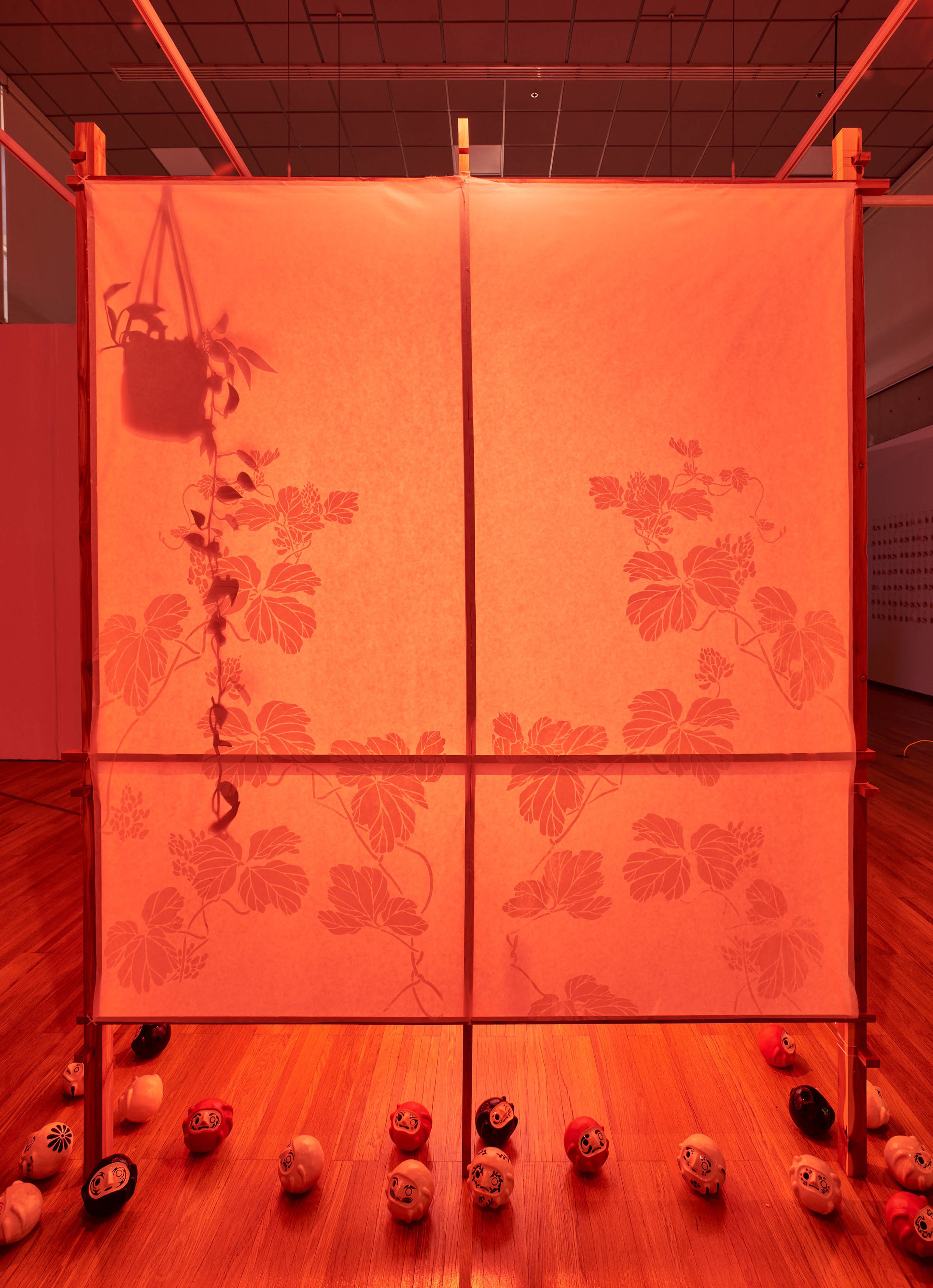Shadows In The Shoji
MFA Thesis exhibition, 2023
Ewing Gallery of Art and Architecture, Knoxville, Tennessee
Shadow inoculates the plain white wall with presence
Liquid manifestation of light
Particulate creation of perforated body
Shape shifter
Liar
Prophet
Paper screen between truth and truth
Molten solidification of promise
Shadows In The Shoji is a multimedia installation that explores the intimate relationship between comfort and fear. Inspired by "Shadows on the Shoji" by Utamaro, The artist translates isolation, liminality, hope, and fear through her Japanese- American cultural identity. The structural form takes inspiration from shoji, paper screens used in traditional Japanese architecture. Screen printed with floral kudzu patterns and stretched over a cedar frame. While the kudzu appears decorative, it encases the shoji room and creeps along the exterior walls, slowly enclosing the structure. This interior space represents self-inflicted isolation and faulty means of protection.
At the structure's base, ceramic daruma dolls are another barrier between the interior and exterior. They represent forlorn hope and longing as a means of self-soothing. Traditionally, paper mâché daruma dolls start with two blank eyes. When a wish is made, one eye is filled in. Once the wish comes true, the second eye is filled, and the ritual is completed by burning the dolls at the end of the year. Takahashi's abstraction of traditional daruma has only one eye filled, suggesting that a wish has been made but is yet to come true. As ceramics, they have prematurely gone through the fire and are thus suspended in an incomplete state.
Red light encompasses this space, highlighting the paradox between fear and comfort. Its warmth and intimacy draw you in while also maintaining a sense of discomfort and caution. White light represents idealization, a doorway separate from the primary structure. It is a faulty portal that leads nowhere.
As a whole, this installation is a self-portrait of the artist's internal struggles and psychological space. It is the manifestation of self-preservation in light of societal pressures, malevolent humanity, and anxiety for the future.

















